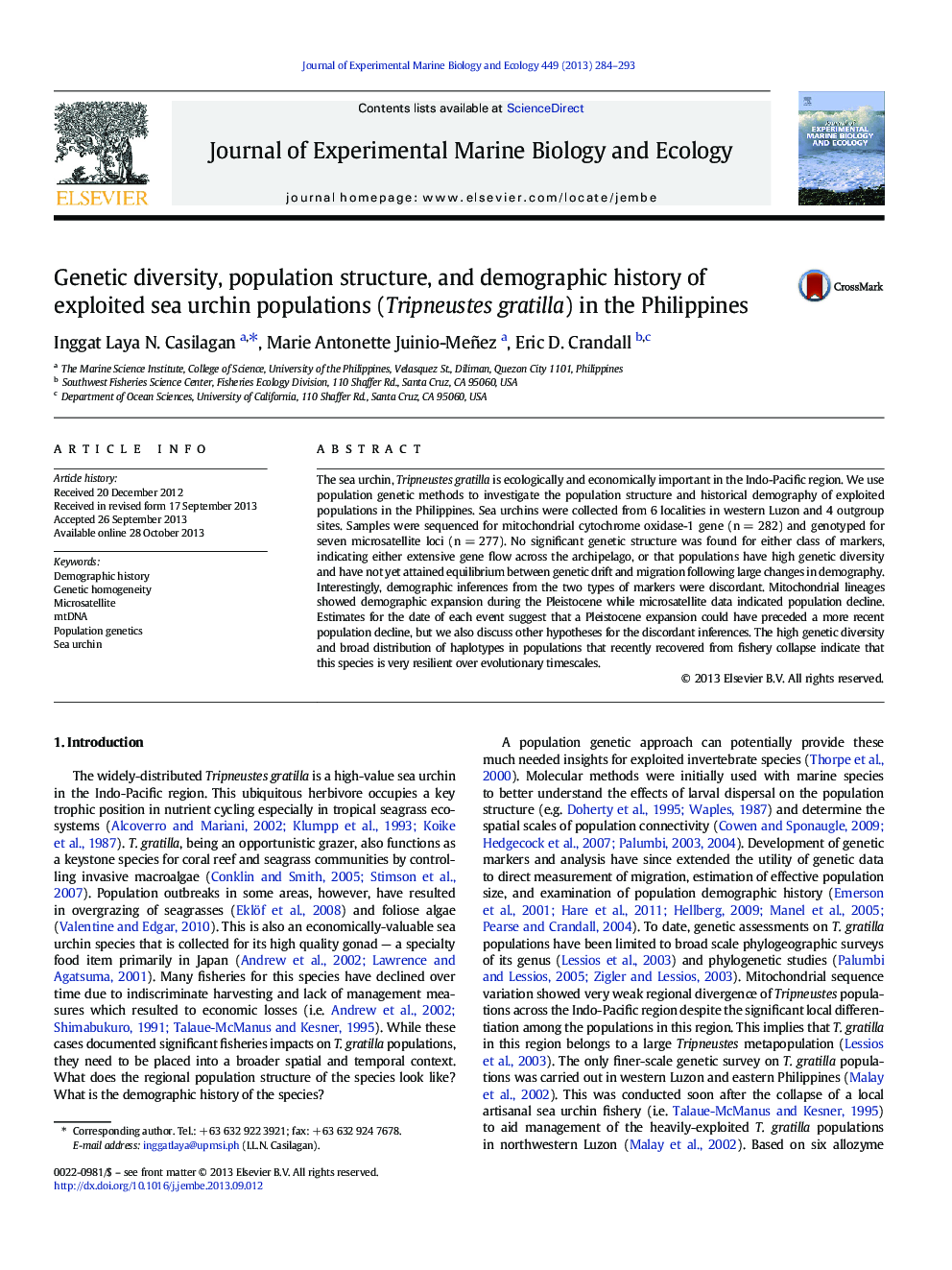| Article ID | Journal | Published Year | Pages | File Type |
|---|---|---|---|---|
| 6304315 | Journal of Experimental Marine Biology and Ecology | 2013 | 10 Pages |
Abstract
The sea urchin, Tripneustes gratilla is ecologically and economically important in the Indo-Pacific region. We use population genetic methods to investigate the population structure and historical demography of exploited populations in the Philippines. Sea urchins were collected from 6 localities in western Luzon and 4 outgroup sites. Samples were sequenced for mitochondrial cytochrome oxidase-1 gene (n = 282) and genotyped for seven microsatellite loci (n = 277). No significant genetic structure was found for either class of markers, indicating either extensive gene flow across the archipelago, or that populations have high genetic diversity and have not yet attained equilibrium between genetic drift and migration following large changes in demography. Interestingly, demographic inferences from the two types of markers were discordant. Mitochondrial lineages showed demographic expansion during the Pleistocene while microsatellite data indicated population decline. Estimates for the date of each event suggest that a Pleistocene expansion could have preceded a more recent population decline, but we also discuss other hypotheses for the discordant inferences. The high genetic diversity and broad distribution of haplotypes in populations that recently recovered from fishery collapse indicate that this species is very resilient over evolutionary timescales.
Related Topics
Life Sciences
Agricultural and Biological Sciences
Aquatic Science
Authors
Inggat Laya N. Casilagan, Marie Antonette Juinio-Meñez, Eric D. Crandall,
